| Part of a series on the |
| Liberal Catholic movement |
|---|
| Background |
| People |
| Rites |
| Liberal Rite |
| Churches |
The names Liberal Catholic Church (LCC) and Liberal Catholic movement are used by a number of separate Independent Catholic denominations throughout the world descending from James I. Wedgwood, which combine Catholic sacramental practices with freedom of belief, and in particular openness to theosophical ideas. [1] [2]
The Liberal Catholic Church was founded by J. I. Wedgwood and Charles Webster Leadbeater, two Theosophists. Wedgwood had been consecrated as a bishop in 1916 in England by Frederick Samuel Willoughby; Willoughby had been consecrated as bishop by Arnold Harris Mathew of the Old Roman Catholic Church in Great Britain, but had later been disowned by Mathew. Wedgwood then travelled to Australia and ordained and consecrated Leadbeater. [3] [4] [5]
Wedgwood established the Liberal Catholic Church in the USA in 1917. [3] Wedgwood says that during the existence of the early unified Liberal Catholic Church, he created the Liberal Rite. [6] Following accusations of sexual misconduct with juveniles, in 1919, Wedgwood resigned from the Theosophical Society and the Liberal Catholic Church. [7]
In 1947, a part of the LCC split due to the controversy over the suspension of an LCC bishop. This independent split is named Liberal Catholic Church International (LCCI), and despite its name it is only present in the USA. [3]
Both the LCC and the LCCI "describe themselves as the Liberal Catholic Church or the Liberal Catholic Church in the Province of the United States and both claim 'official' status as the true church. Both the LCCI and the LCC have similarities and differences, but the critical distinction lies in the succession of bishops". [3]
In 2006, former LCC Presiding Bishop Johannes van Alphen consecrated Markus van Alphen. Alphen, in turn, established the Young Rite. Bishop Johannes himself eventually joined the Young Rite, serving there until his death. Among the tenets of the Young Rite was the belief that all possessed a path to the priesthood, and anyone requesting ordination should receive it. [8] This practice was abandoned in the United States after Markus van Alphen's retirement and with the establishment of the Community of Saint George, a Young Rite jurisdiction. Young Rite USA now requires a multi-year formation program for its clergy. [9]
A bishop is an ordained member of the clergy who is entrusted with a position of authority and oversight in a religious institution. In Christianity, bishops are normally responsible for the governance and administration of dioceses. The role or office of the bishop is called episcopacy. Organizationally, several Christian denominations utilize ecclesiastical structures that call for the position of bishops, while other denominations have dispensed with this office, seeing it as a symbol of power. Bishops have also exercised political authority within their dioceses.
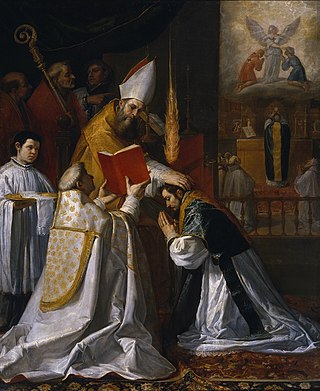
In certain Christian denominations, holy orders are the ordained ministries of bishop, priest (presbyter), and deacon, and the sacrament or rite by which candidates are ordained to those orders. Churches recognizing these orders include the Catholic Church, the Eastern Orthodox, Oriental Orthodox, Anglican, Assyrian, Old Catholic, Independent Catholic and some Lutheran churches. Except for Lutherans and some Anglicans, these churches regard ordination as a sacrament.

Charles Webster Leadbeater was a member of the Theosophical Society, Co-Freemasonry, an author on occult subjects, and the co-initiator, with J. I. Wedgwood, of the Liberal Catholic Church.

Ordination is the process by which individuals are consecrated, that is, set apart and elevated from the laity class to the clergy, who are thus then authorized to perform various religious rites and ceremonies. The process and ceremonies of ordination vary by religion and denomination. One who is in preparation for, or who is undergoing the process of ordination is sometimes called an ordinand. The liturgy used at an ordination is commonly found in a book known as an Ordinal which provides the ordo for celebrations.
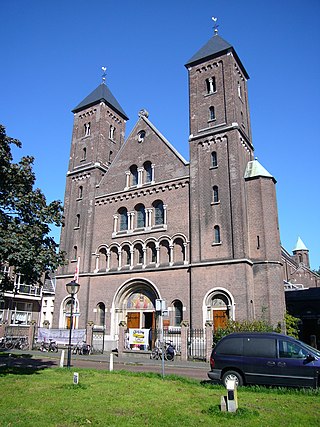
The Old Catholic Church of the Netherlands, sometimes Jansenist Church of Holland, is an Old Catholic jurisdiction originating from the Archdiocese of Utrecht (695–1580). The Old Catholic Church of the Netherlands is the mother church of the Old Catholic Union of Utrecht.

Consecration is the transfer of a person or a thing to the sacred sphere for a special purpose or service. The word consecration literally means "association with the sacred". Persons, places, or things can be consecrated, and the term is used in various ways by different groups. The origin of the word comes from the Latin stem consecrat, which means dedicated, devoted, and sacred. A synonym for consecration is sanctification; its antonym is desecration.
Independent Catholicism is an independent sacramental movement of clergy and laity who self-identify as Catholic and form "micro-churches claiming apostolic succession and valid sacraments", in spite of not being affiliated to the historic Catholic church, the Roman Catholic church. The term "Independent Catholic" derives from the fact that "these denominations affirm both their belonging to the Catholic tradition as well as their independence from Rome".
The Charismatic Episcopal Church (CEC), officially the International Communion of the Charismatic Episcopal Church (ICCEC), is a Christian denomination established in 1992. The ICCEC is a part of the Convergence Movement. Within North America, most of the Charismatic Episcopal Church's congregations and missions are located within the Northern, Southeastern, Midwest, and Western United States; it also has a presence in Texas, and in Western Canada.
Warren Prall Watters was the founding archbishop of the Free Church of Antioch, one of several Independent Catholic Churches in the United States.
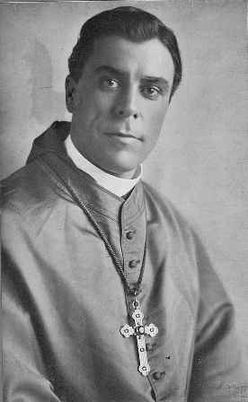
James Ingall Wedgwood was the first Presiding Bishop of the Liberal Catholic Church. Wedgwood was a former Anglican, a member of the Theosophical Society and a member of a co-Masonic order. His work on the Liberal Rite, as well as his efforts to establish a progressive church, are his greatest legacies.
The African Orthodox Church (AOC), is a predominantly African-American Christian denomination which was founded in the United States in 1918 by the joint collaboration of its first patriarch, George Alexander McGuire, and Marcus M. Garvey.
The Convergence Movement, also known as the Ancient-Future Faith, whose foundation is primarily attributed to Robert E. Webber in 1985, is an ecumenical movement. Developed as an effort among evangelical, charismatic and Pentecostal, and liturgical Christians and denominations blending their forms of worship, the movement has been defined for its predominant use of the Anglican tradition's Book of Common Prayer; use from additional liturgical sources common to Lutheranism, Eastern Orthodoxy, and Catholicism have also been employed.
The Orthodox Catholic Church of France, also known as the Orthodox Church of France, is an Eastern Orthodox church mostly in France comprising two dioceses and using a reconstruction of the Gallican Rite. Although the OCCF has been in communion with various canonical Eastern Orthodox churches during its history.
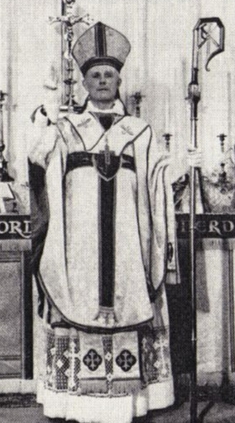
Hugh George de Willmott Newman was an Independent Catholic or independent Old Catholic bishop. He was known religiously as Mar Georgius I and bore the titles, among others, of Patriarch of Glastonbury, Catholicos of the West, and sixth British Patriarch. He was the head of the Catholicate of the West from when he became a bishop, in 1944, until his death in 1979.
The Liberal Rite is the most widely used liturgical rite found within the Liberal Catholic movement. It is also the primary liturgical rite used by various denominations within the greater Liberal Catholic movement.
The Christ Catholic Church is an Old Catholic denomination founded by Karl Pruter in 1965.
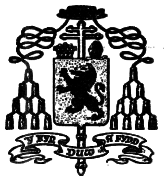
Arnold Harris Mathew, self-styled de jure 4th Earl Landaff of Thomastown, was the founder and first bishop of the Old Roman Catholic Church in the United Kingdom and a noted author on ecclesiastical subjects.
The Open Episcopal Church (OEC) is a liberal Christian denomination. It has bishops in England and Wales and clergy throughout the United Kingdom and internationally. It has over 29,000 members.
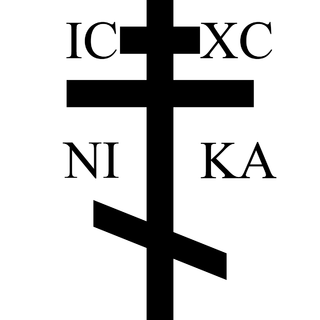
Christianity and Theosophy, for more than a hundred years, have had a "complex and sometimes troubled" relationship. The Christian faith was the native religion of the great majority of Western Theosophists, but many came to Theosophy through a process of opposition to Christianity. According to professor Robert S. Ellwood, "the whole matter has been a divisive issue within Theosophy."

Frederick Samuel Willoughby (1862-1928) was a Church of England priest, academic administrator and later Old Catholic bishop. While vicar of Hooton Pagnell, he founded and was first principal of St Chad's Hostel, which survives as St Chad's College, Durham.
We set to work to eliminate the many features which from our point of view disfigure and weaken the older liturgies. References to fear of God, to His wrath and to everlasting damnation were taken out, also the constant insistence on the sinfulness and worthlessness of man and the frequent appeals for mercy. The services were made as clear and free from repetition in their structural sequence as possible. And every opportunity was given to the congregation to join in the worship with all the resources of mind and will and emotion and self-dedication they were able to command. The sentiments put into the mouth of the worshiper are such as those who are filled with the spirit of devotion and service can honestly and sincerely utter.... It stresses the idea of co-operation with the Divine Father rather than that of supplication, and being outward-turned in the service of God and His world soon enables a man to realize something of the boundless resources of his own being. They are his by right and not simply by grace.